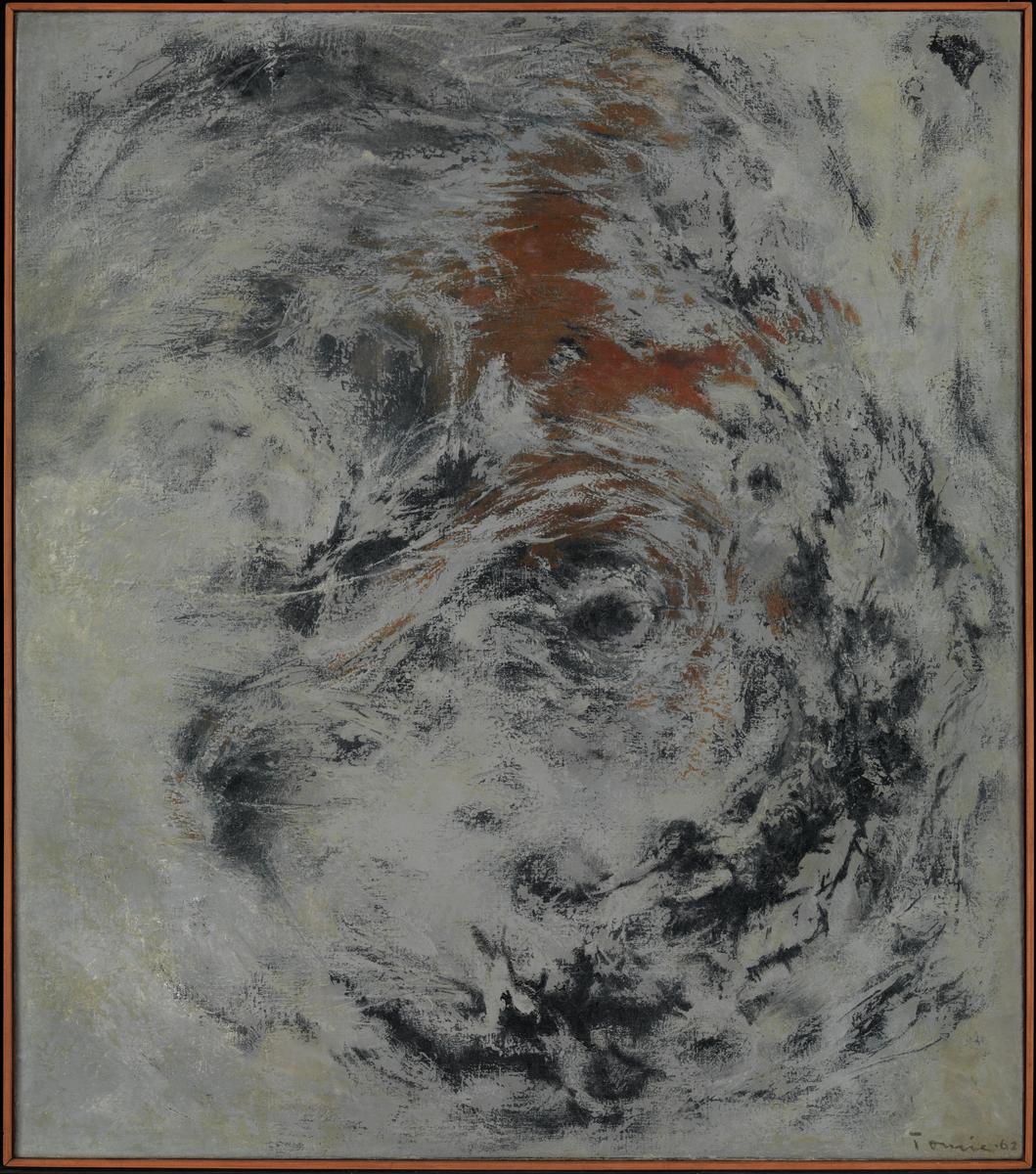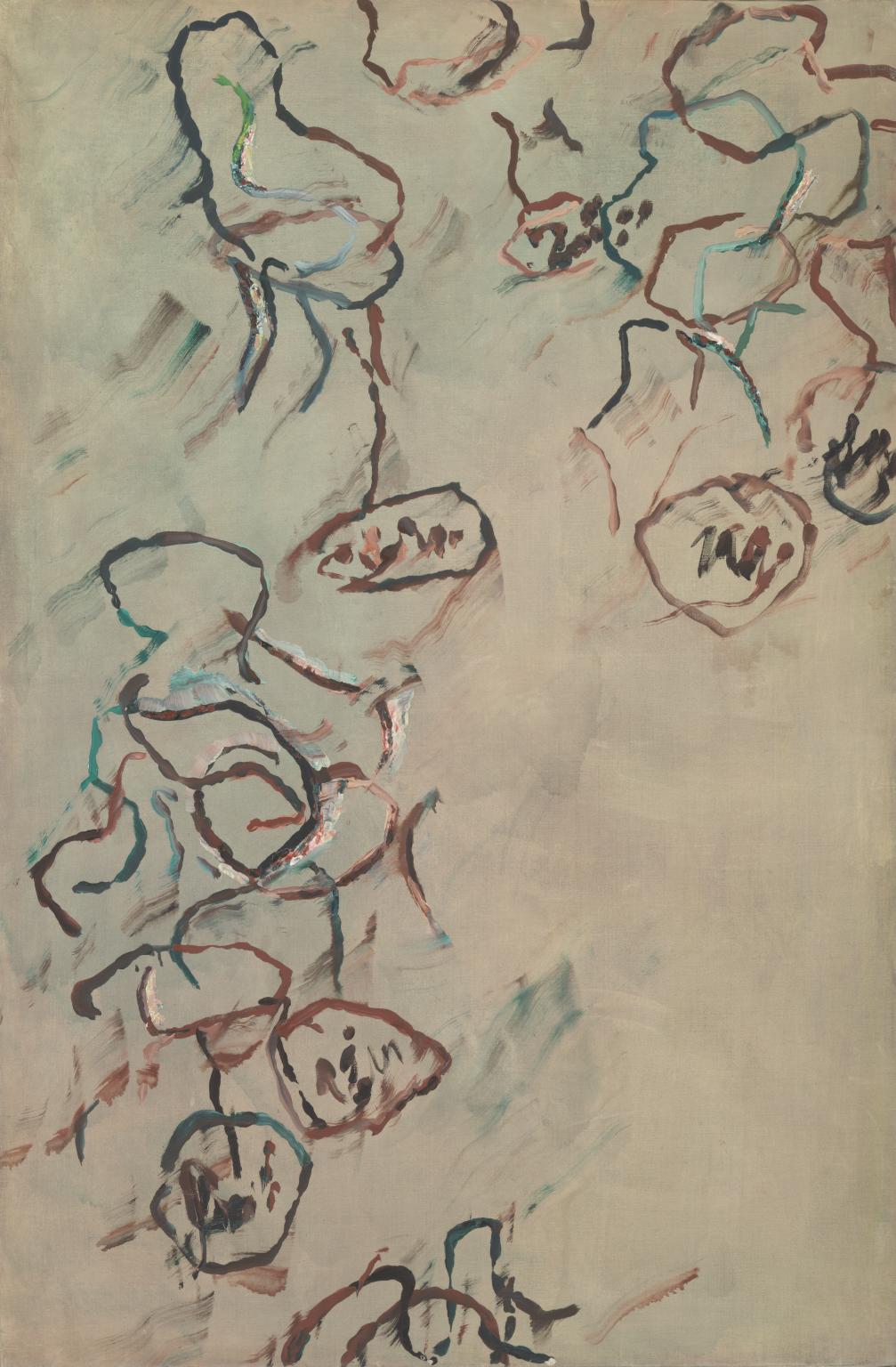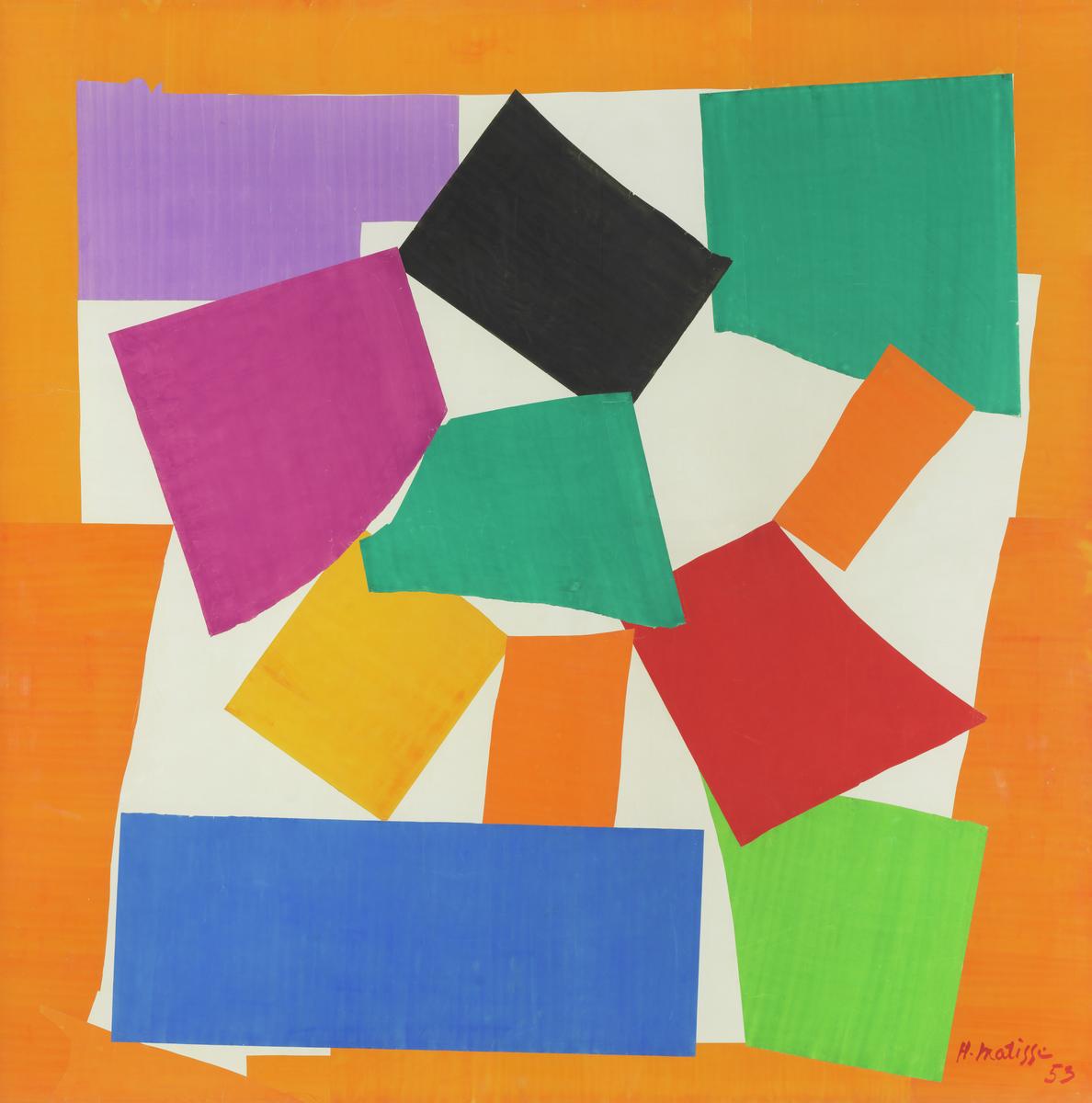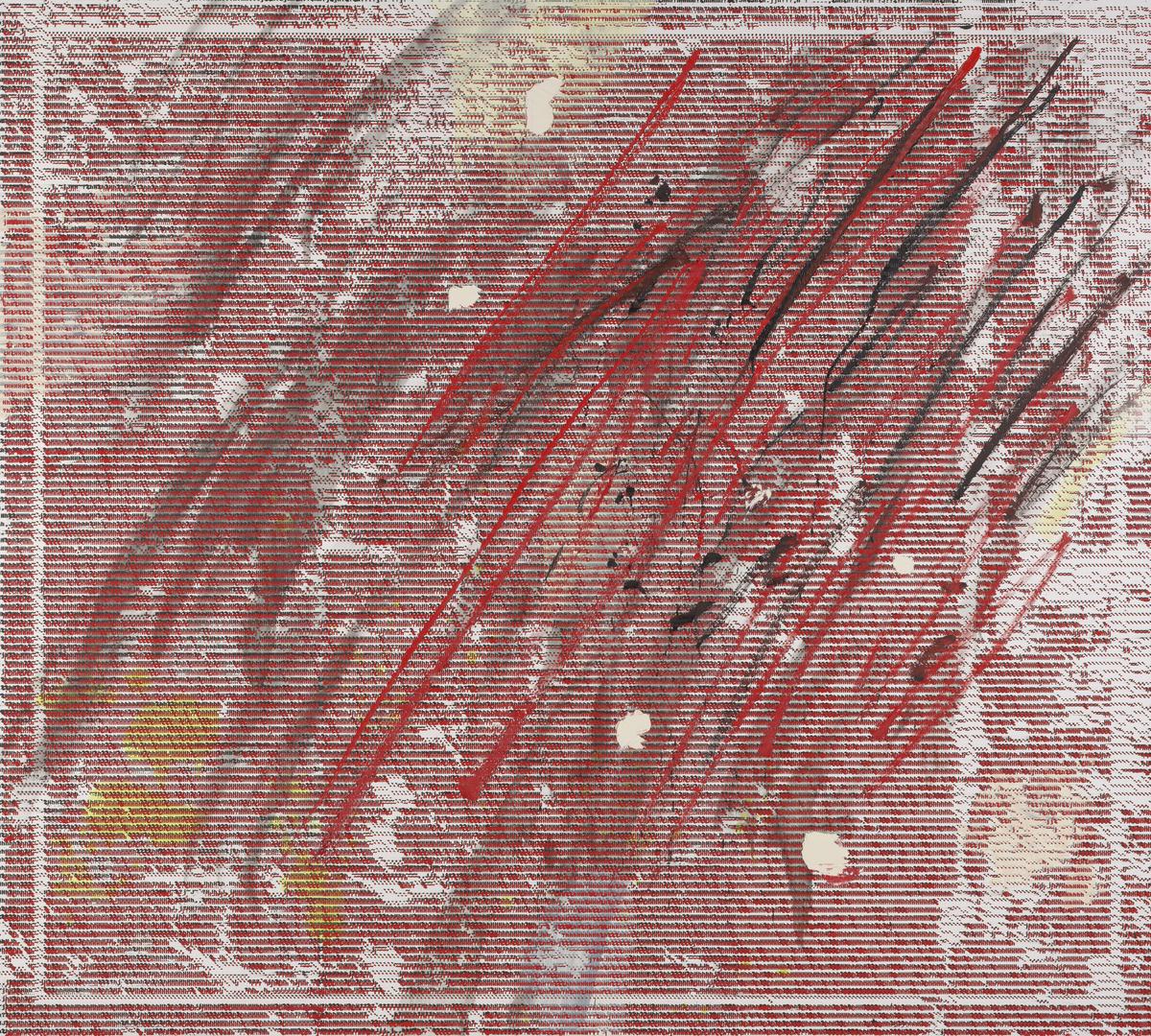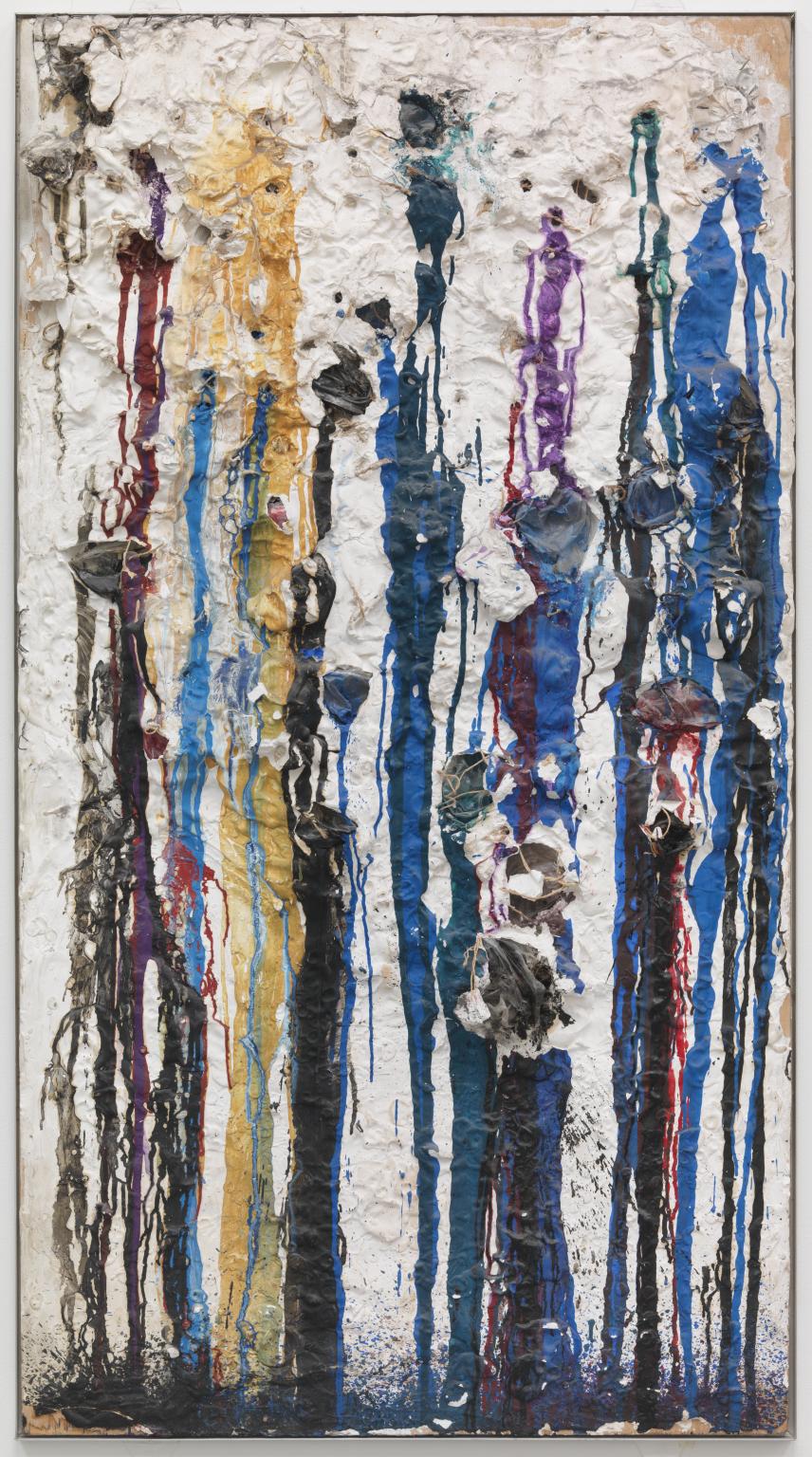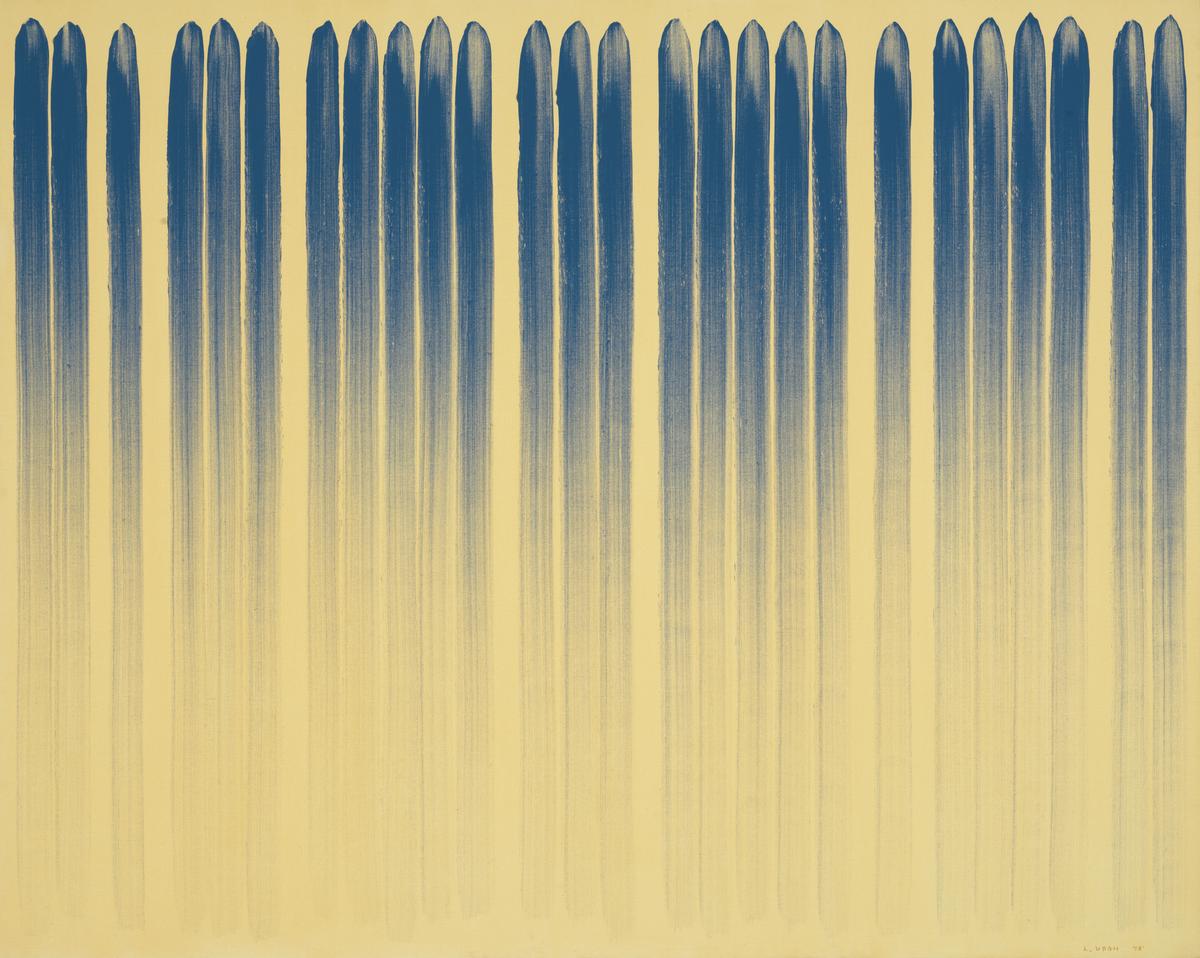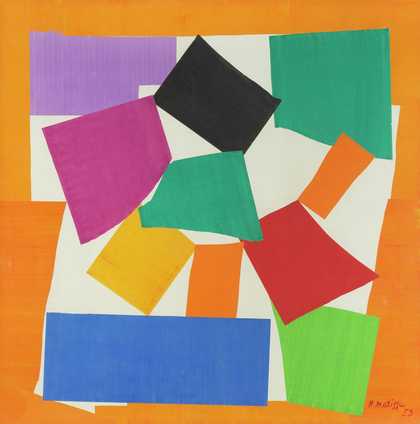12 rooms in In the Studio
Artists in this room demonstrate different ways they approach painting as an action, emphasising the processes and materials they use in their work
The rise of abstraction in 20th-century art opened up new possibilities for painters. They could now convey meaning without having to depict recognisable figures, actions or emotions. Instead they could express themselves freely through brushstrokes or colour alone. Some articulated their inner mental states through the gestures they used to apply paint onto the canvas. Others experimented with materials, giving depth and texture to the surface of their paintings. The years following the Second World War saw a particular growth in these forms of abstraction across the globe, with movements spanning from abstract expressionism in North America to the avant-garde group Gutai in Japan.
In response to these art movements, artists began to produce works that reflected or parodied the earlier artistsã dramatic physical actions and gestures. Niki de Saint Phalle took expressive action to a violent extreme by using a rifle to puncture bags of coloured paint that dripped down the surface of her Shooting Pictures. Other paintersã actions were more conceptual or meditative. Joan Snyder covered her ãStroke Paintingsã in arrays of different types of brush marks, like classification charts or exercises. In his From Line paintings, Lee Ufan gave a visual form to the duration of a brushstroke, painting repeated straight lines until he used up the pigment on his brush.
Over time, many painters have also confronted the spread of image-making technologies and what they mean for traditional art forms. To create her recent paintings, Jacqueline Humphries combines analogue and digital techniques. She makes works that show her hybrid creative process through overlapping layers and surfaces that vibrate and shimmer like video screens.
Art in this room
